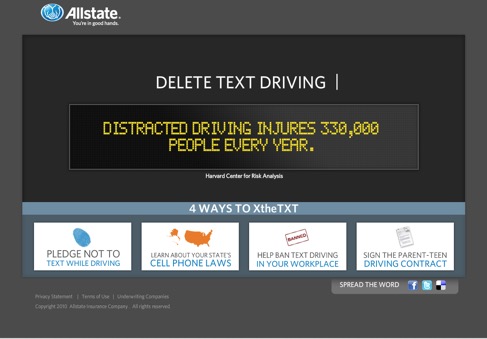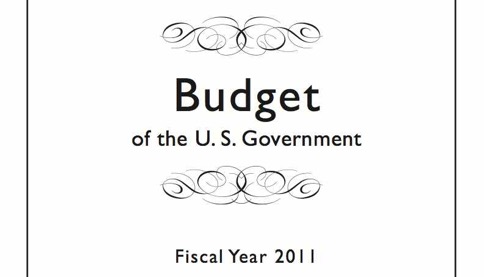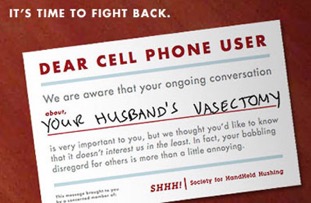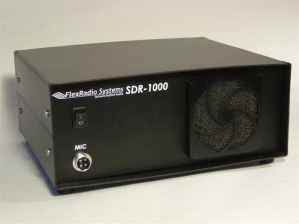Allstate: "Texting while driving kills. But the real crime is, it's legal."
It goes on to say
“Opposable thumbs helped humans to survive. But in modern times, using thumbs to text while driving could lead to extinction....Join us tomorrow, February 9, at the Allstate Thumbs Up Pledge Event from 11:30 a.m. to 7 p.m. at Union Station to add your thumbprint to the more than 65,000 who have pledged not to text and drive.”
This is in addition to the Allstate website shown below on the issue and a separate one devoted to teenage texting

CTIA does have a public service announcement on its website on the teenage issue:
On the Road, Off the Phone
As teens & novice drivers learn the complex task of driving a motor vehicle, safety should always come first. The wireless industry & National Safety Council urge teens to adopt an “On the Road, Off the Phone” philosophy to avoid the dangers of distracted driving”
But CTIA still has this position statement:
The wireless industry is neutral on outright bans of cellular use while driving and hands-free legislation. We believe consumers can best determine what laws (bans or hands-free) that they would or would not support related to talking on their devices.
So it looks like Allstate and the wireless industry have staked out very different positions here.
This is not a new issue. In searching the ever cluttered FCC website for information on it, I found this statement from (then) Comm. Rachelle Chong, who had worked for a major cellular carrier before joining the Commission, to a CTIA meeting in 1997:
“Driving Risks of Mobile Phones
Another potential hot issue for your industry stems from media attention on a recent Canadian study. That study found that drivers who used car phones were four times more likely to have accidents.
In light of this study, I would like to ask the industry to step up your public education efforts about safe driving habits. Stressing the risks involved and the availability of hands free technology would be helpful. I do recognize, however, what a benefit mobile phone users have been for law enforcement officials. They often aid the highway patrol in reporting accidents and reporting road hazards.”

Message from the iPad: Heavy Traffic Ahead

The FCC’s Broadband.gov blog recently had the following post:
Message from the iPad: Heavy Traffic Ahead
February 1st, 2010 [By Phil Bellaria, Director, Scenario Planning, Omnibus Broadband Initiative, and John Leibovitz, Deputy Chief, Wireless Telecommunications Bureau]
Apple’s iPad announcement has set off a new round of reports of networks overburdened by a data flow they were not built to handle. These problems are reminiscent of the congestion dialup users experienced following AOL’s 1996 decision to allow unlimited internet use. For months users had trouble connecting and, once they did connect, experienced frequent service outages. The FCC even held hearings on the problem.
The congestion problem circa 1996-97 revealed an intense latent demand for Internet access. Similarly, wireless network congestion today reveals intense demand for wireless broadband. Widespread use of smartphones, 3G-enabled netbooks, and now, perhaps, the iPad and its competitors demonstrate that wireless broadband will be a hugely important part of the broadband ecosystem as we move ahead.
Eventually, AOL was able to resolve its problems by upgrading its modem and server capacities. Wireless providers today, too, will be able to deal with congestion issues but only if they have adequate spectrum. Reaching an always-on wireless broadband future means that spectrum can no longer remain attached solely to uses deemed valuable decades ago. The broadband plan will suggest ways of moving more spectrum into high value uses, such as broadband access, to help ensure that we don’t get stuck in 1997 dialup-style congestion.
With the iPad pointing to even greater demand for mobile broadband on the horizon, we must ensure that network congestion doesn’t choke off a service that consumers clearly find so appealing or frustrate mobile broadband’s ability to keep us competitive in the global broadband economy.
I have posted the following comment:
WTB's predecessor in the 1980s, PRB, urged the Commission to create more Private Land Mobile (Part 90) spectrum because that use was growing fast too. The preferred source of that was increased sharing of TV spectrum - extending the sharing that was happening in channels 14-20 in 10 cities. PR Docket 82-10 was the forum for comments on this issue.
As Joel Brinkley explained in Defining Vision, the TV broadcasters revolted, brought in Japanese technology as a demo, and said the future of the country depended on analog HDTV. Along the way, the techies figured out how to do DTV and at least the public safety segment of Part 90 got some more spectrum. The rest of Part 90 users had to live with the spectrum they had and the efficiencies available through new technology.
The guest of Feb 3 said "its the simple fact that there is only so much spectrum that a wireless network can deploy in a given area." There is some truth to that. But it is not clear what the limit it is although it is clear that at some point the marginal cost of squeezing more use out of spectrum increases dramatically.
While many people think they need spectrum, what they really need is communications capacity and the conversion of spectrum to capacity is technology dependent. Cellular pioneer Marty Cooper has commented that “Wireless capacity has doubled every 30 months over the last 104 years”. Much of this has been through availability of new spectrum, but technology has also had a profound effect in increasing spectrum capacity.
Suggest you dust off documents from Docket 82-10 which sound a lot like the concerns here that large amounts of spectrum are essential. Such language tends to trigger fights among spectrum incumbents that often focus attention away from technical innovation to improve spectrum efficiency. As we speak the IRAC members are trying to dig a moat around Federal Government spectrum and are still licking their wounds from the AWS reallocation.
Part of the present problem is that the CMRS community in the 1990s projected their requirements for 3G and anticipated rapid growth of 2-way symmetric high speed communications such a 2-way video. As a resulted they created paired symmetric spectrum for 3G/AWS. Guess what? Today's demand is very different and using 3G spectrum for iPhone/iPad is inefficient due to the large asymmetry in traffic between uplinks and downlinks. So part of the solution could be to make the 3G bands more efficient through the use of technology better suited to the real demand.
Parties tend to see spectrum fights as "zero sum games", get spectrum from CMRS by taking it away from someone else. Yet repeated measurements show that over time and space most spectrum isn't used. Part of the solution has to be better more creative sharing of spectrum to go from "zero sum" to "win/win". I tried to show some options in this area in my 8/09 presentation to IRAC.
The IRAC crowd seemed more interested to keeping their "zero sum game" viewpoint and gearing for a fight with the FCC and its regulatees. I hope we can focus less on reallocation and more in creative sharing approaches among all spectrum users.
Ex parte Reform Proposals Imminent
- The Commission will consider a Notice of Proposed Rulemaking to enhance the efficiency, openness, and transparency of the Commission’s proceedings by improving and modernizing certain organizational and procedural rules.
- The Commission will consider a Notice of Proposed Rulemaking to improve the transparency and effectiveness of the FCC’s decision-making process by reforming the ex parte rules.
So it looks like the new team is making good on their promises for reform in ex parte and other procedures. Faithful readers may recall that ex parte reform and transparency have been frequent topics here. Who knows, they may even act on your blogger’s Petition for Review on an ex parte issue that has been pending for 17 months - even though it is mentioned nowhere on the FCC website.
Cellphones and Interpersonal Friction
Yet if you ask many people, they consider certain aspects of cellphone use obnoxious. This hit the spotlight in the consideration of cellphone use in aircraft, Docket 04-435. Officially, that docket was terminated without a decision because “(t)he comments filed in response to the NPRM provide insufficient technical information on whether the use of cellular phones onboard aircraft may cause harmful interference to terrestrial networks.” But a quick review of the record shows that 8,123 comments were filed (a large number for EMC issues) and most of them they deal with other than electromagnetic interference issues. Here is a typical comment filed:
I heard on the radio that the FCC is considering allowing cell phone usage on planes. I most urgently beg you NOT TO DO THIS, in the interests of public safety.
I'm not talking radio signal interference. I'm talking the intolerable, high volume blatherings that already go on all around us, that are going to lead to horrible rage incidents. These day's it's impossible to get on a bus without at least one person hollering into their cell phone, invading the private space of everyone around them.
The AP article on the FCC’s rejection of the proposal was clear
Striking a blow for cell phone haters everywhere, a government agency on Tuesday said it will keep a rule in place that requires the divisive devices to be turned off during airline flights.The reasoning behind the decision was technical. But the avalanche of comments the Federal Communications Commission has logged from airline travelers have been nothing short of visceral.
More recently I have been helping the South Carolina Department of Corrections with the issue of possible cellphone jamming in prisons to prevent illicit use by inmates. It became clear that a major concern of the cell phone industry in this issue was not the prison issue but fear that jamming would happen in other places. At first I wondered why they thought this was likely. I can imagine hotels might like to jam cellphone so they can charge high rates on calls from your room’s phone. Thus they have a malicious profit motive. By why would anyone else want to jam cell phones?
For the same reason why people didn’t want them in aircraft in Docket 04-435: much cell phone use today is obnoxious.
Is there anything that can be done with “social engineering” concepts to reduce this problem? I have read in several places, including a Wikipedia piece, that the lack of “sidetone” in cell phones results in a desire to talk louder than normal as opposed to landlines which have sidetone. Perhaps readers with more experience in this area can confirm whether or not cellphones have sidetone and what are the technical issues involved.
I travel to Japan a lot and I notice there that cellphone use is not as obnoxious as in the US despite higher market penetration and more cramped conditions in urban areas. There are a lot of reasons, some of them cultural. But some of them include actions by the Japanese cellphone industry to facilitate social harmony.
Consider this excerpt from the manual for a cellphone sold in Japan. Note that it starts off with “Use your handset responsibly. Inappropriate handset use can be both dangerous and bothersome. Take care not to disturb others when using your handset”. Did you ever see such language in instructions for a US cellphone or in ads from a US carrier?

Who invented Manner Mode? I have not been able to find out definitively. It appears to have started as an NTT DoCoMo feature and was adopted by the other carriers, but I welcome any input on details or alternative explanations.
So are there incremental steps that can be taken in the US to decrease the interpersonal friction caused by cellphone use?
Wa - harmony

SDR Rulemaking FINALLY Resolved
Note that this docket begins with “03” - yes, that means it has been around since the NPRM was issued on 12/20/03, although the issue in contention here actually is a followon to Docket 00-47. In the NPRM the Commission said brave words about the importance of these technologies:
“By initiating this proceeding, we recognize the importance of new cognitive radio technologies, which are likely to become more prevalent over the next few years and which hold tremendous promise in helping to facilitate more effective and efficient access to spectrum. We seek to ensure that our rules and policies do not inadvertently hinder development and deployment of such technologies, but instead enable a full realization of their potential benefits.”
In the 2007 Order in this docket, FCC said “[M]anufacturers should not intentionally make . . . security measures in a software defined radio public, if doing so would increase the risk that these security measures could be defeated . . . .” The Order then said: “A system that is wholly dependent on open source elements will have a high burden to demonstrate that it is sufficiently secure . . . .”
Those of us who are Firefox users have made a judgment of the security of this open source software vs. the endless security problems of closed source Internet Explorer. The security of open source software if not a real issue. What is an issue is how slow the ancien regime at FCC was in keeping up with technology and keeping up with its “in box”. Telecom technology moves at Internet speed and excessive slowness discourages innovation and the capital formation needed to support it. Your blogger suggested in comments to Docket 09-157 that the Commission should delegate this type of noncontroversial policy issue to a panel of senior employees empowered by Section 5(c) of the Communications Act to make decisions. So far no one else has commented on this proposal. What do you think?
But another issue here in the area of software security has nothing to do with open source software. At the recent SDRForum conference in Arlington (now called the Wireless Innovation Forum) I was on a panel discussion and someone in the audience asked why doesn’t FCC do more about the security of the software in software defined radios. Indeed, with malicious software changes, SDR radios could do all sorts of malicious things to disrupt CMRS communications, public safety communications, etc.
While I was at FCC some of us were concerned about this and considered safeguards. But the SDR Forum and its major members were very insistent that they were responsible people and would only sell SDR units that were difficult//impossible to load with malicious unauthorized software. I am certain that this was and still is the intent of the legitimate companies that are members of the SDR Form and its successor. BUT. FCC Rules do not apply just to them. The same rules apply to anyone who manufacturers or imports SDRs.
There are sleazy foreign companies who have sold systems as antisocial as high power cordless phones that operate on air traffic control frequencies. Such firms would be happy to make an SDR that is approved by FCC with software for some benign function such as Part 90 use. Then they, or an affiliate, can sell through the Internet software that turns the unit into some nefarious use. Once large numbers are imported into the US, there is little in practice FCC can do about them. The fundamental problem about the SDR rules is they assume the manufacturer/importer is a “good guy” in all cases. This is not always the case. I am afraid other spectrum users may find out the hard way and am puzzled while CTIA, NAB and APCO have never been interested in this issue.
FY 2011 Budget & Spectrum
 Today the President’s FY 2011 budget was unveiled throughout the government. So let’s look at how spectrum was affected.
Today the President’s FY 2011 budget was unveiled throughout the government. So let’s look at how spectrum was affected.In the FCC’s budget we set a modest increase of the total agency budget from $428M to $443M (Grand Total Proposed Budget Authority) and staff increase from 1,905 to 1,980.
Spectrum No Longer a Strategic Goal
While not explicitly stated, the FCC’s strategic goals have changed and this will affect the resources for spectrum activities. For several years up to and including the FY10 budget the strategic goals of FCC were: Broadband, Competition, Spectrum, Media, Public Safety, and Modernize. This year they are: Broadband, Consumers, Competition and Innovation, Continual Improvement, Public Safety and Homeland Security, and International. Guess what’s missing? This means that spectrum also does not have Performance Commitments and Metrics in the budget and is likely to get less management attention except in the international area where it is explicitly part of the International goal. No doubt the well connected satellite industry will get its attention and others may get crumbs. We will see.
There are two proposed legislative changes related to spectrum:
Spectrum Auction Authority
The Administration proposes to extend indefinitely the authority of the FCC to auction spectrum licenses, which will expire on September 30, 2012. The additional offsetting receipts associated with this permanent extension are estimated to total $1.6 billion through 2020.
This proposal supports the Administration's efforts to foster new wireless broadband technologies by making new spectrum available. Specifically, the National Telecommunications and Information Administration of the Department of Commerce will collaborate with the FCC to develop a plan to make available significant spectrum suitable for both mobile and fixed wireless broadband use over the next ten years. The plan will focus on making spectrum available for exclusive use by commercial broadband providers or technologies, or for dynamic, shared access by commercial and government users, on either a licensed or unlicensed basis.
Spectrum Licensing User Fee
To promote efficient use of the electromagnetic spectrum, the Administration proposes to provide the FCC with new authority to use other economic mechanisms, such as fees, as a spectrum management tool. The Commission would be authorized to set user fees on unauctioned spectrum licenses based on spectrum-management principles. Fees would be phased in over time as part of an ongoing rulemaking process to determine the appropriate application and level for fees. Fee collections are estimated to begin in 2010, and total $4.8 billion through 2020.
The first one puts legislative pressure on NTIA to find more spectrum for the commercial community. One can hear the IRAC protests already. The second means that ALL spectrum users (presumably excepting only noncommerical uses such as public safety) may have to pay for spectrum access. At present chosen groups, like Part 74 licensees, get spectrum for free while others pay for it. Marcus’ First Law of Spectrum Economics: ‘If spectrum is free, then more spectrum is always cheaper than efficient technology”.
The staffing in OET was 84 in FY 09, is budgeted at 90 now, and is proposed to increase to 96 in FY 11. (By contrast when I was hired in 1979, I was #155. Some functions have moved from OET, but that does not account for all this drop.)
Spectrum inventory work is in the budget:
Spectrum Inventory and Broadband Mapping Data: $2,400,000
• Spectrum Inventory: The spectrum inventory initiative is designed to enable user-friendly access to information regarding spectrum bands and licenses, including those that may be suitable for wireless broadband deployment. The FCC’s spectrum inventory activities will focus on providing general information about commercial and non-commercial use of spectrum bands, by users other than federal users, in the mobile range of 225 MHz to 3.7 GHz, as well as more detailed information about bands of particular relevance to broadband. The public will be able to easily browse spectrum bands, search for spectrum licenses, produce maps, and download raw data for further analysis. Through a single FCC portal, users will be able to access basic information on licenses (e.g., licensee name, contact information, frequency bands) as well as descriptions of frequency bands and allocations. Further, the spectrum inventory will include the capability to search for licenses based on commonly recognizable names of companies (e.g. AT&T, Verizon, etc.), and the amount of spectrum held by licensees on a county-by-county basis for many types of licenses. The initiative contemplates continuing improvement and augmentation of the spectrum inventory over time with inclusion of more comprehensive data. The spectrum inventory is intended to assist in ongoing spectrum policy planning and decision- making, promote a robust secondary market in spectrum, and improve communications services in all areas of the United States, including rural and underserved areas as well as tribal lands.
There is a new public safety initiative that is not entirely clear at this time:
Emergency Response Interoperability Center: $1,500,000
The long term mission of the Emergency Response Interoperability Center (ERIC) will be to ensure the operability and interoperability of public safety wireless broadband communications capabilities. The funding provided will be to establish ERIC so that it is operational in advance of the deployment of the public safety broadband wireless capabilities. One function of ERIC will be to establish an advisory function for members of the public safety community and other federal government agencies, including [FCC], DHS and NTIA[, and will work in close coordination with the Department of Homeland Security’s Cyber Security and Communications Directorate]. The long term goal of ERIC is to establish a public safety broadband interoperability communications profile including interoperability standards, authentication, encryption, roaming, priority access, application uses and interconnectivity which will be used to set baseline requirements for public safety users. In addition, public safety broadband capabilities are deployed, ERIC will resolve interoperability-related disputes between public safety entities, work with third parties (e.g., federal government, state and localities, tribal nations) on broadband infrastructure sharing, and maintain relevant databases, among other things. This important initiative will help to remedy historic barriers to public safety communications interoperability, and is a key element of next-generation public safety communications capabilities.
On the NTIA part of the budget, spectrum management staffing stays fixed at 32, although there is a 3 person increase in research at ITS in Boulder CO. This is for a program called Spectrum Access with Intelligent Networks and Cognitive Radios which is described as
The goal of this research program is to examine spectrum sharing approaches and to identify the techniques that can provide the most efficient and effective sharing of the radio spectrum through the use of “Intelligent Radios.” This research will aid the NTIA, the FCC, the telecommunications industry, and other government agencies in the design of dynamic spectrum access schemes for cognitive radio under different communication requirements. The research will also produce interference protection criteria (IPC) for all types of Federal Government radio and radar systems and provide insights and solutions for technical issues associated with spectrum sharing. Under this initiative, NTIA’s Institute for Telecommunication Sciences (ITS) will identify, evaluate, and recommend solutions for the technical issues and challenges of spectrum sharing.
Over the next five years, ITS will produce a number of publications that will provide U.S. federal agencies and commercial service providers, with interference protection criteria and evaluations with respect to various cognitive radio approaches and technologies. Several U.S. federal agencies, along with commercial service providers, will benefit from this information. The FCC and NTIA, with responsibility for spectrum management, are very interested in what cognitive radio technology has to offer and how it would affect their current regulatory scheme. The military and the public safety and emergency response communities see the benefits that this new radio technology offers, with frequency agility and/or flexibility, the ability to enhance interoperability between different radio standards, and the capability to sense the presence of interferers. Other countries and international agencies such as the International Telecommunications Union (ITU) also are looking to adopt similar cognitive radio approaches to increase spectrum utilization.
The budget says this program will “ aid the NTIA, FCC, the telecommunications industry, and other government agencies in the design of dynamic spectrum access schemes for cognitive radio under different communication requirements.”
The effect of spectrum’s disappearance as a strategic goal could be important. I hope industry and the press insist on clarifications here.








![Validate my RSS feed [Valid RSS]](valid-rss-rogers.png)

